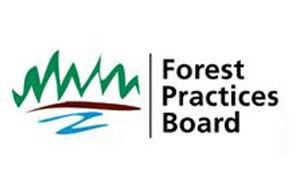The trees really are greener on some sides of B.C.'s forests. Prince George is one of the places where loggers are crossing too early over that line, in the view of B.C.'s forestry watchdog.
The Forest Practices Board (FPB) announced that some districts around B.C. have dead pine trees still to cut, yet some forest companies have nonetheless felled significant amounts of green trees.
The FPB report on the issue was released on Tuesday. It outlined the problem in stark terms.
"British Columbia is in the midst of a large-scale salvage program, the likes of which has never been seen. There is nothing sustainable about this harvest; this is a one-time activity initiated by the province to recover value from the trees killed by the mountain pine beetle epidemic and to
speed regeneration of affected areas. Once those trees no longer have any economic value, salvage will stop and the province will need to sustainably manage the harvest of the remaining live trees."
The dead trees killed by the mountain pine beetle comprise most of what's called the short-term timber supply. The mid-term timber supply is the next set of trees to be cut once the dead pine is no longer an option. That population of trees is still alive and healthy because they were different evergreen species untouched by the beetle or they are tracts of pine missed by the beetles.
Since the epidemic, the province-wide emphasis has been to target the dead pines as much as possible, trying to prolong that short-term supply as long as possible so when it's gone, the mid-term supply is large enough for the forest industry to still survive on.
"The more live green trees we cut down today, the fewer that will be available for us in five or 10 years," said Tim Ryan, the FPB's chair. "We are stressing the importance of taking the dead now and leave the green for later, to minimize the impact on your future timber supply."
That is well known to milling companies, and they are the stakeholders with the most to lose if the mid-term timber supply falls short. However, harvesting green trees is still happening.
"The report looks at government's records of what was harvested throughout the area affected by the mountain pine beetle epidemic," said Ryan. "The majority of the pine trees harvested last year were dead, but over the last four years, the total amount of pine in the harvest has been steadily decreasing and was under 60 per cent of the harvest last year."
The two districts pushing their green timber luck the most are the Morice Tiber Supply Area (surrounding Houston) and the Prince George Timber Supply Area.
According to their research, said Ryan, the government-suggested maximums for cutting green trees in the Prince George region was 100 per cent reached in 2011 and 2012, exceeded in 2013 and appears on track for significant overruns in 2014. The Morice area is taking their green timber at an even wider ratio, and could exceed guidelines by double in 2014.
On the other hand, said Ryan, "One of the best timber supply areas out there is the Quesnel TSA. They have done very well at focusing on the dead and minimizing harvests of the green."
Adding to the FPB's alarm is the patchy data available on which to base harvesting ratios between dead stands and healthy ones. The report urges the province's chief forester and provincial government to vigorously reinvest in forestry science and harvesting caution.
The Board encourages the chief forester to:
Develop a process of rapid re-evaluation of the Allowable Annual Cut in areas where it has been increased to facilitate salvage harvest of dead pine.
Be consistent in explicitly stating expectations about harvest performance, and, in particular, how performance against those expectations should be measured.
The Board encourages government to:
Ensure it collects the information needed by the chief forester to measure performance, particularly in areas where there is an expectation that salvage harvesting will continue for the foreseeable future



